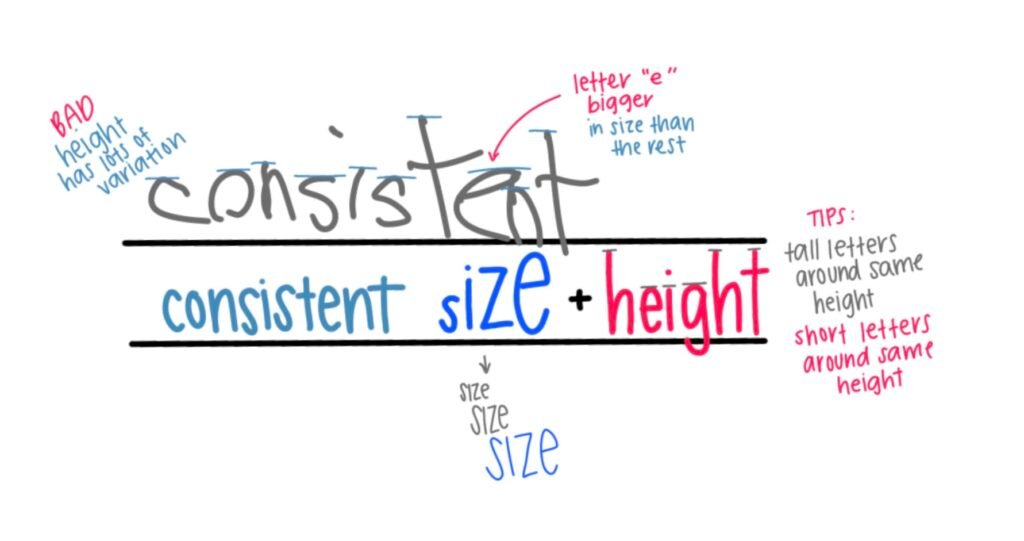How to Improve Your Handwriting in 3 Easy Steps

Introduction
Handwriting is an essential skill that significantly influences how others perceive your written communication, ensuring the message conveyed is clear and easily understood. At school, good versus bad handwriting can be the difference between a 90 and a 75 on an English or a Math test. In a professional setting, having good handwriting can indicate that a person pays attention to detail and is organized. While having good handwriting is not essential to your calligraphy journey, there are definitely some easy-to-fix points that can make a huge difference in the appearance of your work for those of you who want to transform your daily handwriting and penmanship.
Main Elements of Good Handwriting: even spacing, consistent lettering, and maintaining words on the same line. Let’s tackle each of the points with examples provided in the picture below!
Achieving Even Spacing Between Words
Spacing plays a crucial role in the legibility and overall aesthetics of handwriting. Uneven spacing between words can make text appear cluttered and difficult to read. Proper spacing ensures that each word stands distinct, enhancing the readability and visual appeal of your writing.
Techniques for Maintaining Even Spacing
- Using guidelines – visualize a small, uniform space, approximately the width of a lowercase ‘o’ or ‘n’, between each word. This mental image can act as a consistent reference point, helping you to maintain regular spacing throughout your writing.
- Focus + Repetition – start by writing sentences and consciously focusing on the space between each word. Dedicate time to writing exercises that emphasize spacing, such as copying paragraphs from a book or composing your own sentences.
Over time, these techniques will become second nature, resulting in a more polished and aesthetically pleasing handwriting style.

Maintaining Consistent Letter Size and Shape
Consistent shapes, particularly for circular letters like ‘a’, ‘o’, and ‘g’, are crucial in maintaining the flow and balance of your handwriting. Short letters or letters without a stem should be approximately the same height while tall letters should have their stems extended to the same degree as well.
How to Practice Effectively?
- Using lined paper – when practicing, it is essential to focus on keeping each letter within the confines of the lines, ensuring that the ascenders (parts of letters that extend above the main body, like in ‘h’ or ‘k’) and descenders (parts of letters that extend below, such as in ‘y’ or ‘p’) are consistent throughout.
- Tracing letters – this practices the muscle memory required for consistent handwriting and allows you to internalize the shapes and proportions of each letter.
- Draw light guidelines – when practicing freehand, try sketching round circles or a letter’s general shape to focus on making the height and width consistent.


Keeping Words Aligned on the Same Line
A consistent baseline helps in avoiding the visual clutter that arises from uneven lines.
Strategies
- Using lined paper – provides a clear guide for where letters should rest. If lined paper is not available, drawing light guidelines with a pencil can also serve as a reference for maintaining a straight baseline.
- Ruler – after writing a sentence, use a ruler to check the alignment of your words which can provide immediate feedback and help you correct any deviations.
Practice with lined paper to get the muscle memory down and a clear vision for what a straight baseline should look like. Then once you feel comfortable, move on to copy paper and checking with a ruler.

Practice Sheets Will Come Out Soon!
Note:
It’s okay to experiment with spacing, with the height and aesthetic. Not all good handwriting looks the same, but they all have one thing in common: consistency. Keeping your letter consistent will definitely help your handwriting become more legible and appealing to the eye. Ready to get some compliments on your handwriting?

Author
jasmineye30@gmail.com